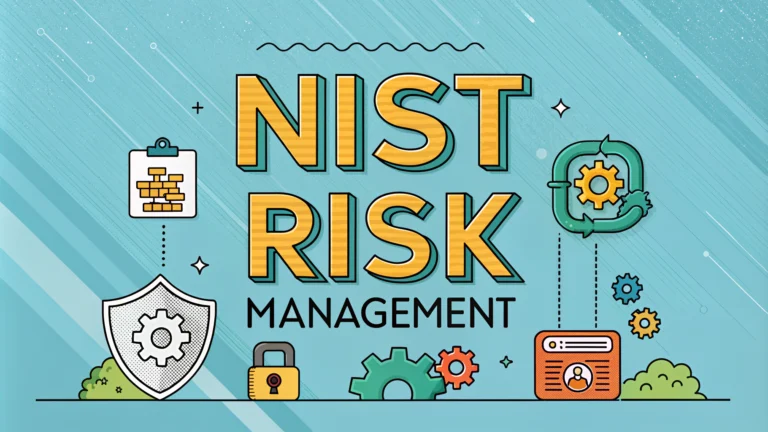NIST (National Institute of Standards and Technology) provides structured guidelines for penetration testing as part of their Risk Management Framework (RMF).
The NIST SP 800-115 document outlines specific methods for security testing and assessment, including penetration testing procedures.
Key Components of NIST Penetration Testing Guidelines
- Planning and preparation phase
- Discovery and reconnaissance
- Vulnerability scanning and assessment
- Penetration attempts and exploitation
- Post-exploitation activities
- Reporting and documentation
Planning Phase Requirements
- Define clear objectives and scope
- Obtain written authorization
- Establish emergency contacts
- Document test boundaries
- Set up communication channels
Testing Methodology Standards
NIST recommends a structured approach that aligns with other frameworks like OSSTMM and PTES.
| Phase | Activities |
|---|---|
| Discovery | Network mapping, port scanning, service identification |
| Assessment | Vulnerability analysis, configuration review |
| Attack | Exploitation attempts, privilege escalation |
| Reporting | Documentation, risk assessment, remediation guidance |
Documentation Requirements
- Test plans and procedures
- Tools and techniques used
- Findings and vulnerabilities
- Impact assessments
- Remediation recommendations
Risk Assessment Integration
Test results should feed directly into the organization’s risk management process.
Recommended Tools
- Nmap for network discovery
- Nessus or OpenVAS for vulnerability scanning
- Metasploit for exploitation testing
- Wireshark for network analysis
Additional Resources
For detailed information, refer to NIST Special Publication 800-115.
Contact Information
NIST Computer Security Division: [email protected]
Phone: 301-975-NIST (6478)
Testing Process Validation
Testing results must be validated through multiple methods to ensure accuracy and reliability of findings.
Validation Methods
- Cross-verification with different tools
- Manual testing confirmation
- Peer review of findings
- False positive elimination
Compliance Requirements
NIST penetration testing guidelines align with various regulatory frameworks and standards.
| Framework | Alignment Requirements |
|---|---|
| HIPAA | Security risk analysis and management |
| PCI DSS | Annual penetration testing requirement |
| SOX | Internal control assessment |
Continuous Improvement
Feedback Loop Integration
- Regular testing schedule updates
- Methodology refinement
- Tool selection optimization
- Staff training enhancement
Conclusion
NIST penetration testing guidelines provide a comprehensive framework for security assessment. Organizations following these guidelines can effectively identify vulnerabilities, assess risks, and improve their security posture. Regular updates and adherence to these standards ensure robust cybersecurity practices and regulatory compliance.
Final Recommendations
- Implement regular testing cycles
- Maintain current documentation
- Update methodologies based on new threats
- Invest in continuous team training
FAQs
- What is NIST’s approach to penetration testing in risk management?
NIST defines penetration testing as a specialized type of assessment conducted on information systems or individual system components to identify vulnerabilities that could be exploited by adversaries. It’s integrated into the Risk Management Framework (RMF) as part of the security assessment process. - How does penetration testing fit into the NIST Risk Management Framework (RMF)?
Penetration testing is primarily associated with the RMF’s Assess step (Step 4), where it helps organizations evaluate security controls, identify vulnerabilities, and validate security measures’ effectiveness in protecting critical assets. - What are the key requirements for penetration testing according to NIST?
NIST requires penetration testing to include scope definition, threat analysis, exploitation attempts, post-exploitation activities, and detailed reporting of findings. Testing must be conducted by qualified personnel with appropriate authorization. - What types of penetration testing does NIST recognize?
NIST recognizes white box (full knowledge), black box (no knowledge), and gray box (partial knowledge) testing approaches. It also acknowledges external, internal, and application-specific penetration testing methodologies. - How frequently should penetration testing be performed according to NIST guidelines?
NIST recommends conducting penetration testing at least annually for critical systems, after significant infrastructure changes, or as required by specific compliance frameworks and risk assessments. - What documentation is required for NIST-compliant penetration testing?
Required documentation includes formal test plans, scope documents, rules of engagement, authorization letters, testing methodologies, detailed findings reports, and remediation recommendations. - How does NIST differentiate between vulnerability scanning and penetration testing?
NIST defines vulnerability scanning as automated testing for known vulnerabilities, while penetration testing involves active exploitation attempts and requires human expertise to simulate real-world attacks. - What are the minimum qualifications for penetration testers according to NIST?
NIST requires penetration testers to have relevant security certifications, demonstrated technical expertise, understanding of testing methodologies, and knowledge of security controls and risk management principles. - How should organizations handle sensitive data discovered during penetration testing?
NIST mandates strict data handling procedures, including encryption of test results, secure communication channels, and proper disposal of sensitive information discovered during testing. - What remediation timeframes does NIST recommend for penetration testing findings?
Critical vulnerabilities should be addressed immediately (within 24-72 hours), high-risk findings within 30 days, and medium-risk findings within 90 days, as per NIST guidelines.







